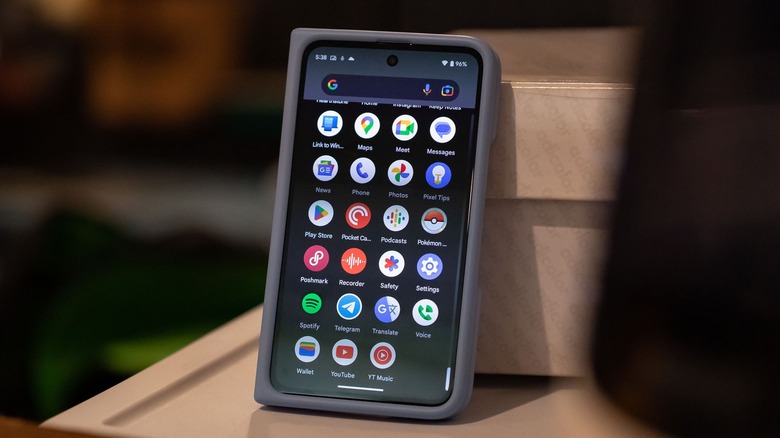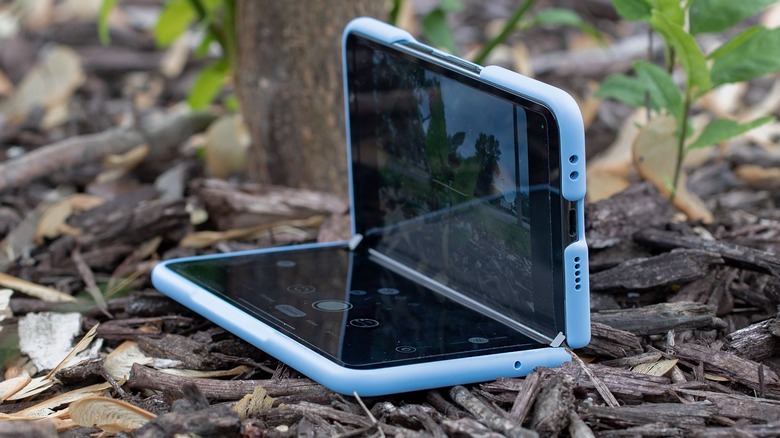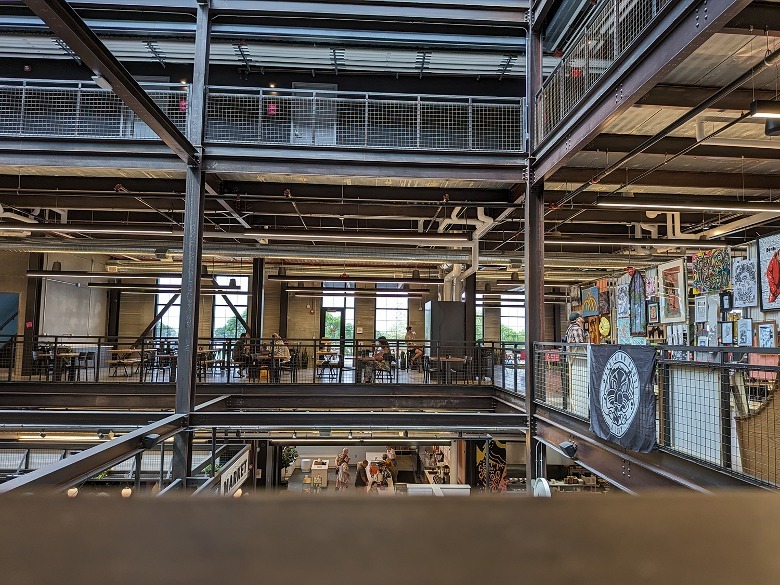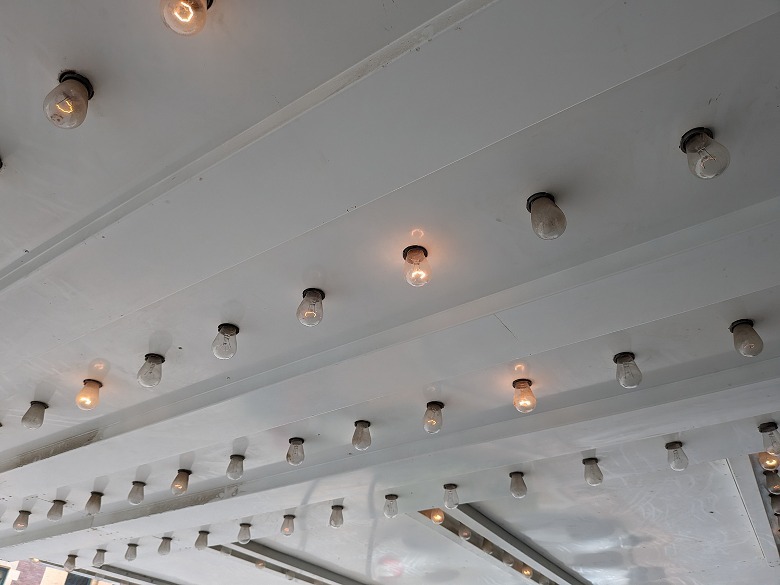Google Pixel Fold Review: Smooth Innovation At A Considerable Cost
- Foldable display is robust and high-end
- Versatility afforded by transforming hardware
- Front display realistically usable as smartphone
- 120Hz displays in and out
- Software accommodates apps regardless of optimization
- Wireless charging/Fast charging
- Gets a little warm when playing 120Hz games
- 120Hz refresh, bright screen drain battery quick
- Undeniably expensive
The Google Pixel Fold is a top-quality foldable smartphone device with a price higher than its value. At approximately $1700, the Google Pixel Fold costs effectively the same amount as a Samsung Galaxy Z Fold 4, another device with a price that exceeds its value. If, however, we try to forget about the price for a bit, it becomes clear that the Google Pixel Fold is one of the most interesting and surprisingly solid devices Google's ever released.
The Google Pixel Fold takes what's good about the Google Pixel 7 Pro and spreads it out with a versatile pair of displays in a phone that's unlike any the brand has made before. But this isn't the first foldable display-toting smart device on the market. Samsung's released several generations of foldable devices — and a few other brands have tried their hand at this sort of device a couple of times, too.
What we need to do is decide whether Google created a better foldable experience than those that came before it. We've also got to decide, once again, if a foldable display is necessary enough (or even entertaining enough) to warrant the cost. Google provided a Pixel Fold (model G9FPL) for the purposes of this review.
Front display
The smaller of the two displays on the Pixel Fold is a 5.8-inch 1080 x 2092 OLED with 120Hz image refresh and HDR capabilities. On its own, this panel delivers a unique 17.4:9 aspect ratio with some highly rounded corners. It seems made to feel like it could be used on its own — there seem to be no limitations put on this outer display as a standard smartphone. On the other hand, the extreme curve of the corners of this phone's front display also indicates that the user is meant to treat this front panel as a window into the full experience within.
Unlike the new Motorola Razr Plus, the Pixel Fold's external display doesn't feel shockingly capable. It feels like it should be expected to be just as capable as it is. It's a size and shape that feels natural to use — it's not awkward, as so many "front display" panels on foldable devices are.
This external display on the Pixel Fold is ever-so-slightly less pixel-dense than the Google Pixel 7 Pro (408 ppi vs 512 PPI), and it doesn't have HDR10+ like the Pixel 7 Pro (or its own foldable display), but its HBM (high brightness mode) and peak brightness levels are the highest on any Pixel device to date.
The external display on the Pixel Fold has an HBM brightness of 1200 nits and a max brightness of 1550 nits. That barely edges out the display on the Pixel 7 Pro at 1000 nits (HBM) and 1500 nits (max brightness).
Foldable display
The star of this smartphone is a 7.6-inch foldable OLED panel. This foldable display isn't quite as densely packed with pixels as its external display compatriot, but at 1849 x 2298 it's still rolling with a respectable 378 ppi. While the external display is only technically capable of standard HDR, the foldable display has HDR10+ (like the Pixel 7 Pro).
The foldable display's brightness (HBM and peak) are effectively on par with those of the Pixel 7 Pro and is ever-so-slightly less than its companion external panel. With 1000 nits HBM and 1450 nits peak brightness, the Pixel Fold's foldable display can blast light strong enough to read comfortably outdoors on a sunny day.
Back when we published our Galaxy Fold hands-on the same day the device was formally revealed, the hardware showed what felt like a concerning amount of crease in its center. While it's likely the units at Google's event were identical to the units we're seeing now, the reality of the situation has set in. Certainly, there is a crease — but it's easy to dismiss after using the device for a short while.
This foldable display is as high-quality as any that's come before it — with one exception: Galaxy Z Fold 4. And even there, the only significant difference comes in the bezels.
The bezel around the foldable display
Compared to the foldable display on the Samsung Galaxy Z Fold 4, the foldable display on the Pixel Fold looks like it's a generation behind — not because of the panel itself, but because of the bezel that surrounds it. The Samsung device has a display that barely has a bezel and works with an under-display sensor so there's no interruption to the panel, top to bottom. The Pixel Fold has a sizeable bezel with enough space to fit a standard user-facing camera.
One might argue that the benefits of having that bezel outweigh the aesthetic drawbacks. It could be said that it's better to have this standard 8MP f/2.0 24mm camera (that's nearly as high-quality as the front-facing camera on the Pixel 7 Pro) — better than the under-display 4MP camera on the Galaxy Z Fold 4, anyway.
But there's a camera on the front that captures images and video at least as well — and a whole multi-lens camera array on the back of the device. Normally it'd be unfair to compare a front-facing "selfie" camera to a back-facing camera because the back-facing camera doesn't allow the user to see what they're capturing as they capture it.
But the Pixel Fold allows the user to use its front display to show the user what the back-facing camera is prepared to capture. There should be no need for the camera above the foldable display at all, really.
Without a case on this device, its materials and finishes make it surprisingly slippery and easy to drop. While the bezel does afford a bit of thumb space to keep a grip on the Pixel Fold while unfolded — it's difficult to imagine using it long-term without some additional protection.
Foldable software
If you're looking at Google's list of apps that have been optimized for and custom-fitted to the Google Pixel Fold, and you plan to make the most of it and them, you'll have a great time with this device. If you've never used a foldable phone like this before and expect a seamless transition from a single standard-sized screen to this device, you're in for a rough ride.
We've not yet found an app that works fine with a single-screen Pixel smartphone but won't work with the Google Pixel Fold. Google's done the work to make Android versatile enough to accommodate apps that have not yet been optimized for a device like this. Even apps that wouldn't normally function properly on tablet-sized devices still work fine with the Fold.
Google seems invested enough in this device's rare shape, size, and experience that this will likely be the most exciting piece of Google hardware for a while.
Cameras
The back-facing camera array on the Pixel Fold is not quite as powerful as the Pixel 7 Pro, but it's just as capable of capturing a photo on the go. What sets this device's cameras aside are the ways in which the rest of the hardware assists them.
In Tabletop mode, the Pixel Fold holds itself up in order to bypass the need for a tripod. Tabletop mode comes into play when the Pixel Fold is unfolded into an L shape.
Tabletop mode also allows the user to step back from the device to enable it to snap a photo on a stable surface. Tapping the device's camera timer and leaving it to snap a photo while it's sitting still can make a lot of difference when it comes to capturing a decent photo.
Of course, Google's Pixel camera processing system does wonders, too — that's been true since the first Pixel was released in 2016.
Above you'll see a set of photo samples captured with the back-facing camera array on the Google Pixel Fold.
Battery life
Google's first foldable device has a 4727mAh battery inside. If you're using one of Google's 30W chargers, you'll see some "fast charging" as such. But if you're buying the Pixel Fold new, you'll still need your own USB power plug. You get a 1-meter USB-C to USB-C cable, but you'll need to buy a Google 30W USB-C charger separately if you don't already have one. That'll cost you $25.
You also get the option to use Qi-standard wireless charging. So if you already have wireless charging pads in your home, you might never need a USB cord at all.
Without playing games fully expanded on the foldable display, the Pixel Fold is capable of lasting a whole day with a single charge. That's including mobile data, displays at 75% brightness, and casual web browsing and social media use.
Once mobile games come into play, the battery takes a significant hit. Playing a game that's capable of running at 120 frames per second, fully expanded on the Pixel Fold's foldable display, at peak brightness can easily drain the device's battery in a few hours.
Wrap-up
The Google Pixel Fold is no less an enthusiast device than any of the other similarly-sized and similarly-priced foldable devices on the market today. The Samsung Galaxy Z Fold 4 is an extremely comparable device — they cost about the same, and they've got displays that'll continue to look and feel top-quality for at least a couple of years.
The key reason why you might want to choose the Samsung device over Google's Fold is the built-in S Pen. If you're hoping to use a stylus on your foldable device and you don't want to carry that stylus separately, the Samsung Galaxy Z Fold 4 is the best device for you right now — assuming you're living in the U.S. at the moment.
If you're looking for the best foldable device on the market today with a camera that's every bit as capable as the Pixel 7 Pro, look to the Pixel Fold. The Pixel Fold can be purchased from the official Google Store online for a starting price of around $1800.












